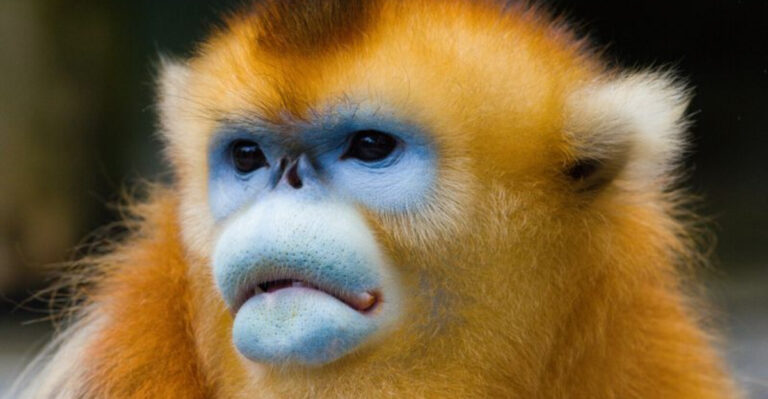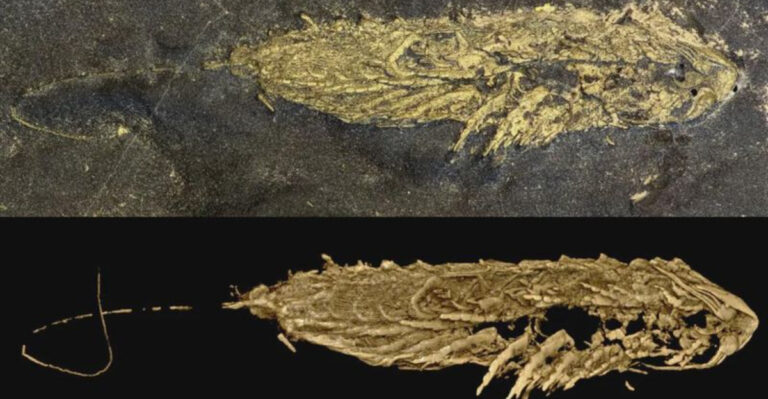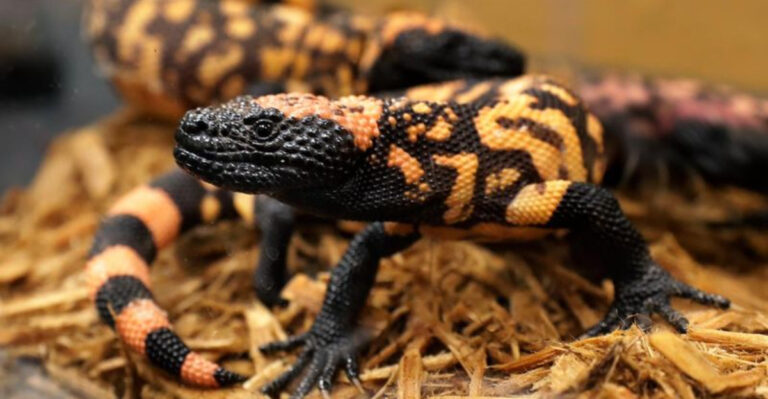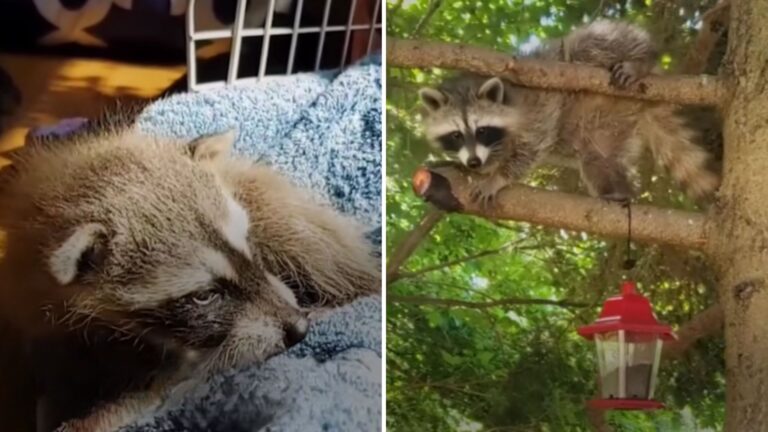15 Moments Bison Took Back Their Wild Habitat

Bison once roamed North America in massive herds, but hunting and habitat loss nearly wiped them out by the early 1900s.
Today, these magnificent creatures are making a comeback as conservation efforts help restore their populations across the continent.
Their return symbolizes hope for wild spaces and ecological balance, showing nature’s remarkable resilience when given a chance to recover.
1. Yellowstone’s Triumphant Return
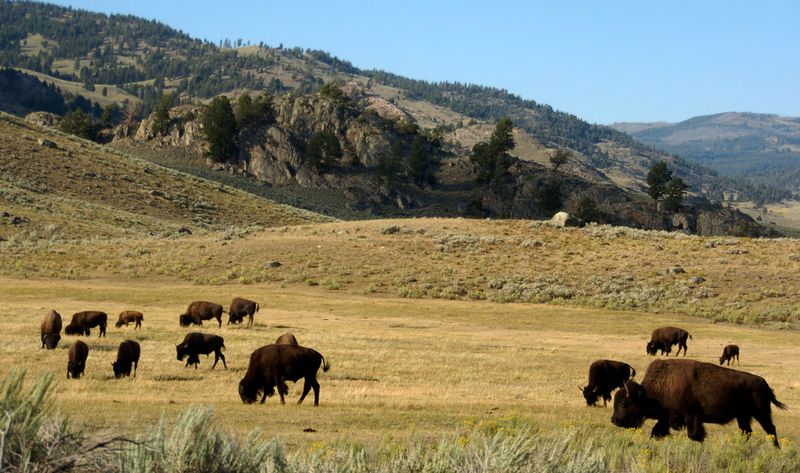
After nearly vanishing from Yellowstone National Park, bison have staged an incredible comeback. Starting with just 23 animals in the early 1900s, the population has grown to over 5,000 today, creating one of conservation’s greatest success stories.
These massive animals now freely roam the park’s valleys and grasslands, fulfilling their ecological role as they graze, creating habitats for other species. Their presence has transformed the landscape, helping restore natural patterns of vegetation growth.
Visitors can witness these magnificent creatures year-round, especially in Lamar Valley, where bison herds dot the landscape much as they did centuries ago.
2. Prairie Pioneers At Tallgrass Prairie Preserve

Oklahoma’s Tallgrass Prairie Preserve witnessed a historic moment in 1993 when 300 bison were reintroduced after a century-long absence. Today, approximately 2,500 bison roam freely across 40,000 acres of restored prairie.
Their grazing patterns have revitalized the ecosystem, encouraging native grasses to thrive while creating microhabitats for countless prairie species. Researchers have documented increased biodiversity throughout the preserve since their return.
The seasonal movements of these herds mimic ancient patterns, with dramatic spring calving and autumn ruts bringing new energy to this recovered landscape. Their presence has made this the largest protected remnant of tallgrass prairie in the world.
3. Wind Cave’s Underground Connection
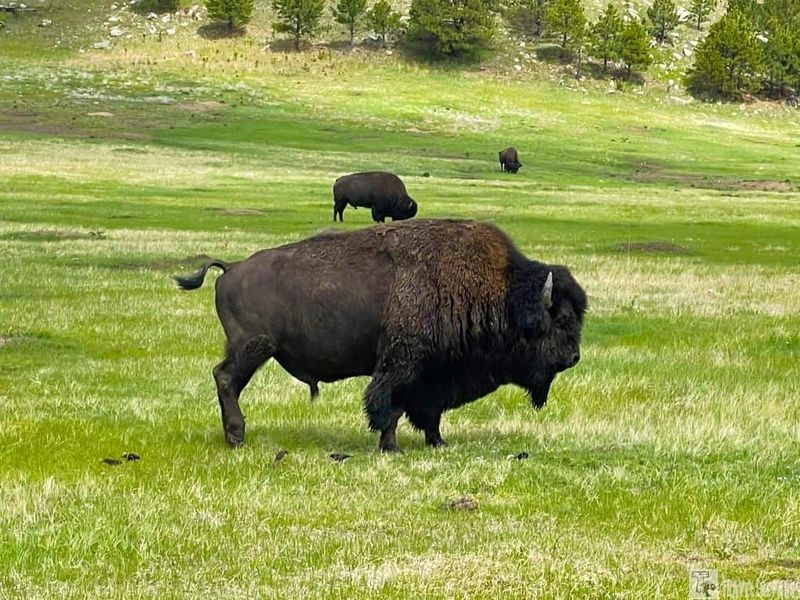
Wind Cave National Park in South Dakota maintains one of the most genetically pure bison herds in North America. These animals carry the same DNA as those that roamed the Great Plains centuries ago, making them living links to the past.
The park’s unique landscape – prairie above and complex cave systems below – creates a perfect environment for these creatures. Bison have established traditional pathways across the grasslands, their movements synchronized with seasonal changes.
Scientists study this herd closely because their genetic purity offers insights into how bison adapted to prairie environments over thousands of years. Their grazing patterns actually increase plant diversity, with over 400 plant species thriving in areas where bison regularly feed.
4. Badlands Revival
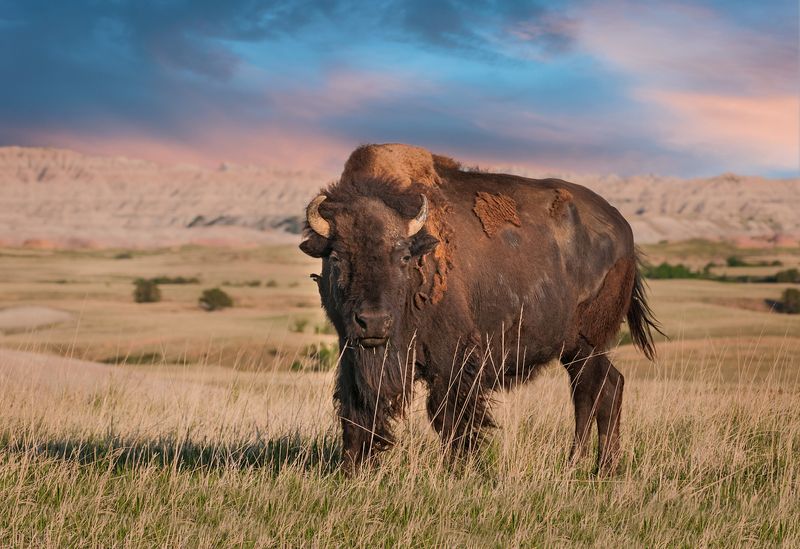
South Dakota’s Badlands National Park welcomed bison back in 1963 with just 28 animals. That small group has expanded to over 1,200 today, reclaiming their ancestral territory among the park’s striking rock formations.
Rangers report fascinating behavioral changes as the herd has grown – establishing traditional migration routes and wallowing spots that hadn’t been used for generations. Their heavy hooves break up hardpacked soil, creating depressions that collect rainwater and support unique plant communities.
Visitors often experience traffic-stopping “bison jams” as the enormous creatures cross roads at their own pace, a powerful reminder that humans are merely guests in this recovered wilderness.
5. Grand Teton’s Mountain Migrants
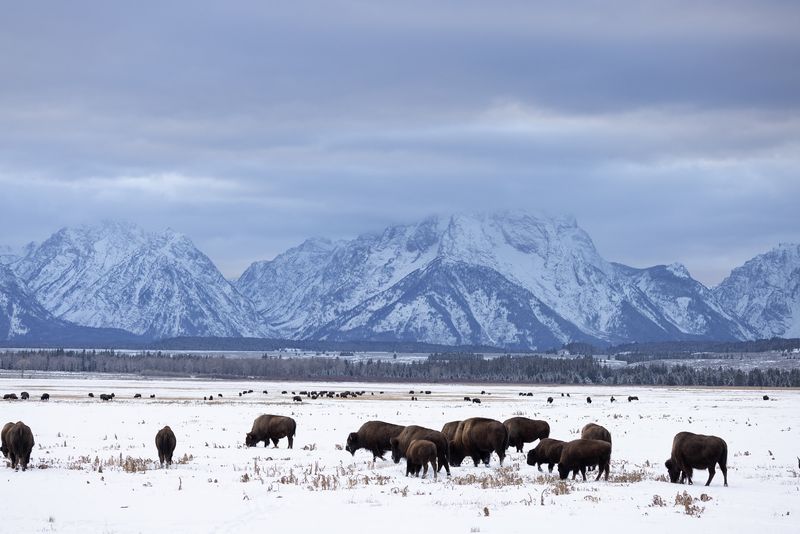
Grand Teton National Park’s bison demonstrate remarkable adaptability, migrating seasonally between high mountain meadows and lower valleys. Their return to these landscapes has restored ancient migration corridors unused for over a century.
Winter visitors witness an extraordinary sight as these massive animals plow through deep snow using their massive heads as natural snowplows. Their powerful bodies, insulated by thick fur, allow them to thrive in temperatures that would challenge most mammals.
Park biologists have documented how these seasonal movements shape vegetation patterns throughout the park’s diverse elevations. Photographers flock to capture images of bison silhouetted against the dramatic Teton mountain range – living symbols of wild America reclaiming its heritage.
6. Canadian Comeback At Grasslands National Park
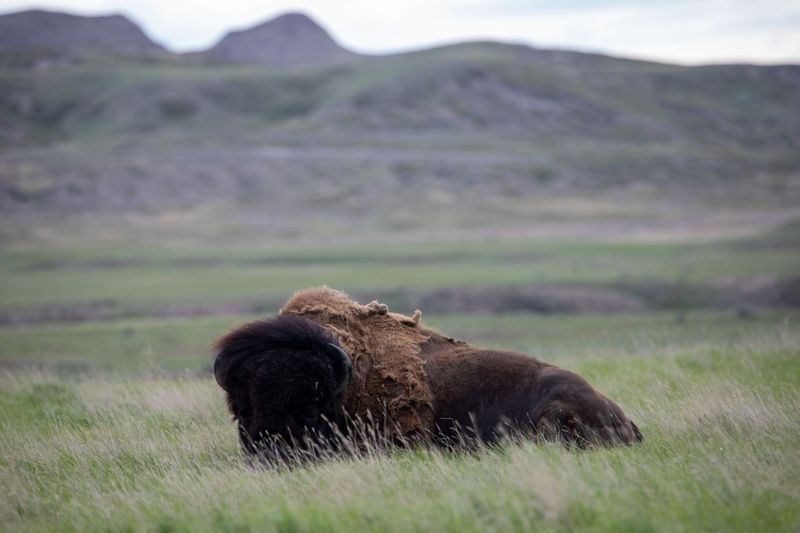
Canada’s Grasslands National Park witnessed a historic moment in 2005 when plains bison returned after a 120-year absence. The initial group of 71 animals has since expanded, reclaiming their ecological role across thousands of acres of native prairie.
Their reintroduction has triggered cascading benefits throughout the ecosystem. Ground-nesting birds use shed bison fur to line their nests, while dung beetles and other insects thrive in their waste. Wolf populations have also begun to recover, drawn by the presence of their traditional prey.
Indigenous communities celebrate this return as a spiritual homecoming, reconnecting with cultural traditions tied to these animals. Visitors can now experience the landscape as it existed for thousands of years before European settlement.
7. Konza Prairie’s Scientific Miracle

Kansas State University’s Konza Prairie Biological Station reintroduced bison in 1987 as part of what would become one of the longest-running ecological experiments in North America. Scientists have documented remarkable changes in this tallgrass ecosystem over decades.
The research reveals bison’s role as “ecosystem engineers” – their selective grazing increases plant diversity while their wallowing creates microhabitats for rare species. Their seasonal movements prevent any single area from being overgrazed, allowing for natural recovery cycles.
Graduate students conduct annual health checks on the herd, providing valuable data on how these animals adapt to changing climate conditions. This living laboratory demonstrates how large grazers can be key partners in prairie conservation rather than threats to the landscape.
8. Fort Peck’s Genetic Salvation

Montana’s Fort Peck Indian Reservation made conservation history in 2012 by welcoming genetically pure bison descended directly from Yellowstone’s herd. This transfer represented the first return of these animals to tribal lands in generations.
The Assiniboine and Sioux tribes manage two separate herds – one for cultural purposes and another for commercial use. Tribal elders incorporate the animals into traditional ceremonies, restoring spiritual practices disrupted by the species’ near-extinction.
Young tribal members learn traditional ecological knowledge about bison management, combining ancestral wisdom with modern science. This project represents a new model of conservation where Indigenous communities lead restoration efforts on their ancestral lands, healing both the landscape and cultural connections.
9. Wichita Mountains Wildlife Refuge Renaissance
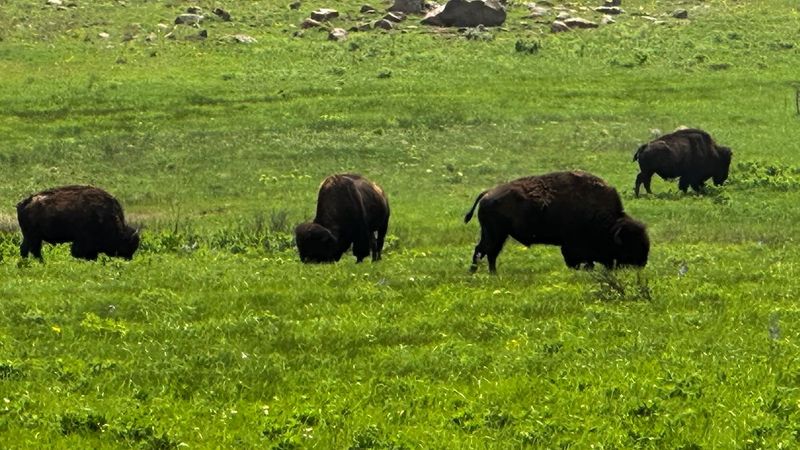
Oklahoma’s Wichita Mountains Wildlife Refuge received 15 bison from New York’s Bronx Zoo in 1907, launching one of America’s earliest conservation success stories. That small group has grown into a thriving herd of approximately 650 animals today.
The refuge’s unique mix of prairie and forest creates ideal habitat, with rocky outcroppings providing shelter during extreme weather. Annual public auctions of surplus bison help maintain optimal population levels while generating funding for conservation programs.
Visitors during the autumn rut witness spectacular displays as bulls compete for dominance, their bellows echoing across the valleys. This herd has become so successful that it has provided founding animals for restoration projects in nine other states, spreading genetic diversity throughout conservation efforts.
10. Theodore Roosevelt National Park’s Presidential Herd
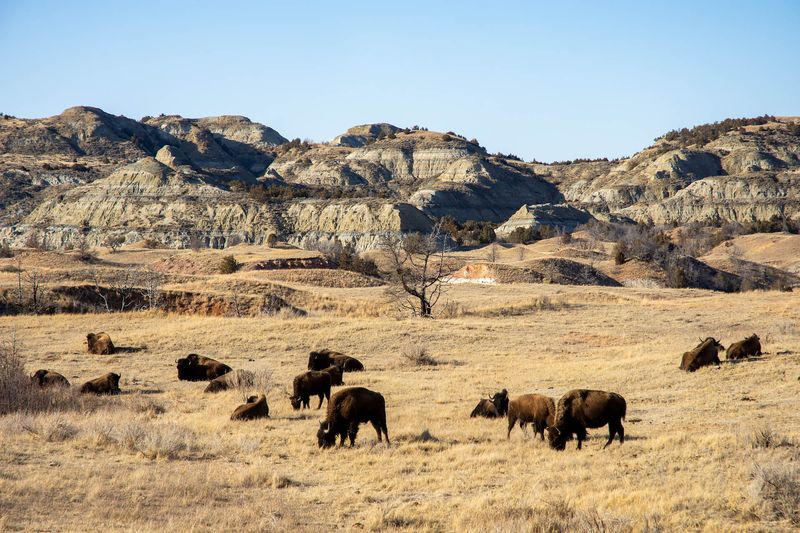
North Dakota’s Theodore Roosevelt National Park maintains a thriving bison population in the very landscape that inspired Roosevelt’s conservation ethic. The president’s time ranching in these badlands shaped his vision for American wilderness protection.
The park’s herd has adapted perfectly to the rugged terrain, using natural features for shelter and following ancient pathways across the landscape. Their presence has reduced invasive plant species while encouraging native grasses to flourish.
During summer, visitors often spot newborn calves – their distinctive orange-red color standing out against the adults’ dark brown coats. This successful restoration represents a living memorial to Roosevelt’s conservation legacy, bringing his vision of preserved wilderness full circle.
11. American Prairie Reserve’s Bold Vision
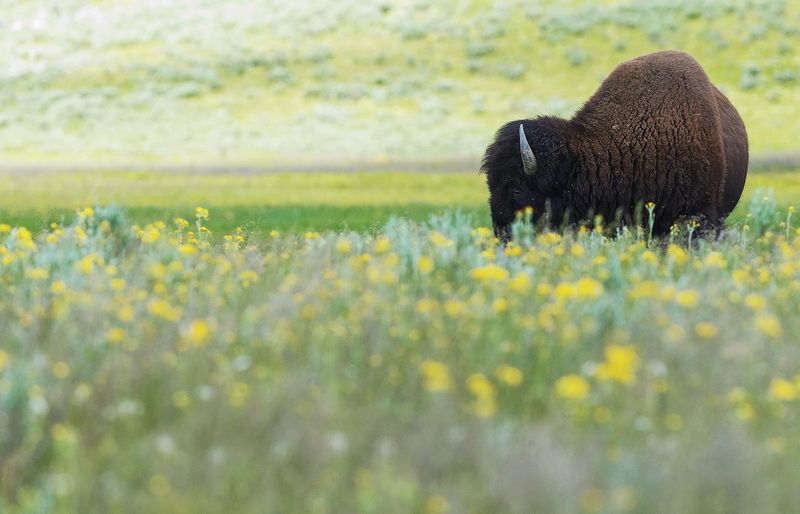
Montana’s American Prairie Reserve represents North America’s most ambitious bison restoration project, working to create a 3.2 million-acre protected area with up to 10,000 free-roaming bison. The current herd of about 800 animals continues to expand as the reserve acquires more land.
Unlike many conservation areas, this project connects public and private lands to create migration corridors mimicking historical patterns. Researchers use GPS collars to track the animals’ movements, documenting how they instinctively follow ancient routes their ancestors used centuries ago.
The reserve welcomes visitors to witness this unprecedented restoration effort, offering safari-style tours to view bison alongside pronghorn, elk, and prairie dog towns. This landscape-scale approach demonstrates conservation’s evolution from saving species to restoring entire ecosystems.
12. Banff National Park’s Mountain Pioneers
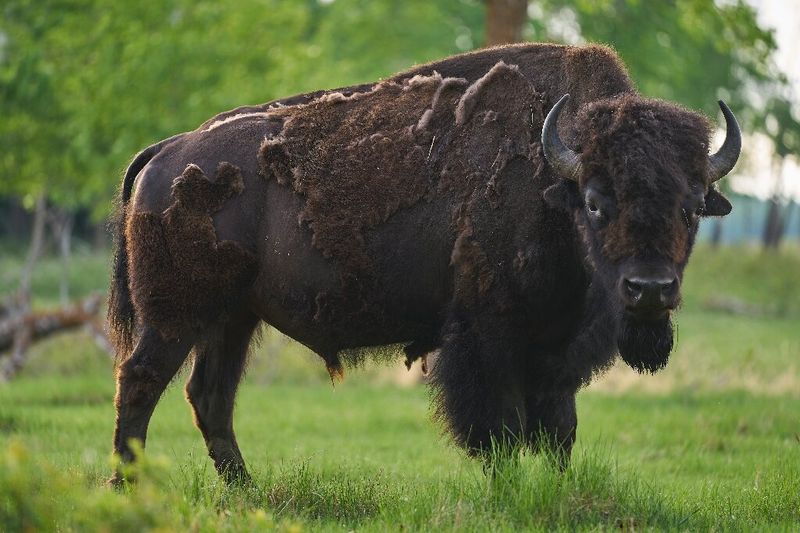
Canada’s Banff National Park made history in 2017 by reintroducing bison to the mountainous landscape after a 140-year absence. The carefully selected herd was transported by helicopter and truck to a remote valley where they were initially kept in a soft-release enclosure.
After 16 months of monitoring, the enclosure was opened, allowing the animals to explore their expansive mountain habitat freely. Park officials were thrilled to document the first calves born in the wild Banff backcountry in nearly a century and a half.
These mountain bison face unique challenges compared to their prairie cousins, navigating steep terrain and deep snow. Their return restores a missing ecological link in Canada’s first national park, fulfilling a vision that took decades of planning.
13. Nachusa Grassland’s Prairie Pioneers
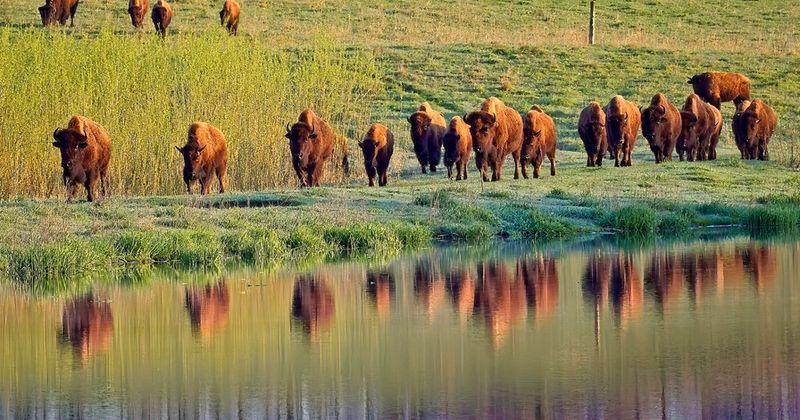
Illinois’ Nachusa Grasslands made conservation history in 2014 by reintroducing bison to restored prairie just 100 miles from Chicago. This project represents the first time bison have roamed free in this region since the 1830s.
The Nature Conservancy-managed site has documented remarkable ecological changes since their arrival. Prairie bird species have increased by 35%, while plant diversity has surged in areas where bison graze. Their selective feeding creates a mosaic of vegetation heights, benefiting species that require different habitat structures.
Volunteer stewards conduct annual health checks on the herd, monitoring how these animals adapt to a landscape that has been transformed by agriculture and development. This project proves restoration is possible even in heavily altered Midwestern landscapes.
14. Minneopa State Park’s Prairie Ambassadors
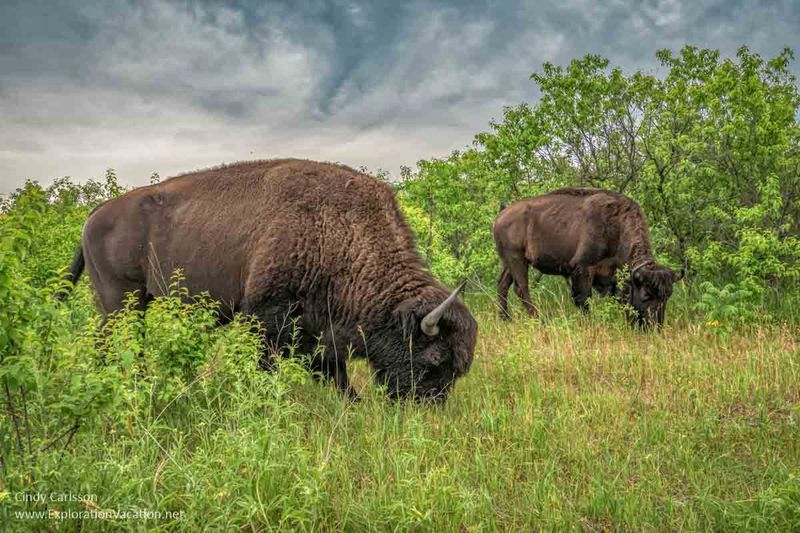
Minnesota’s Minneopa State Park welcomed bison back in 2015, bringing these iconic animals to a landscape they hadn’t inhabited for over 130 years. The carefully selected herd carries valuable genetics from multiple conservation populations.
Their reintroduction has transformed visitor experiences, with the park’s bison drive-through route becoming one of the most popular wildlife viewing opportunities in the state. School groups regularly visit to learn about prairie ecology and conservation history.
Park managers use controlled burns and other techniques to maintain ideal habitat conditions, working with the bison’s natural grazing patterns. The project demonstrates how even smaller state parks can play crucial roles in species recovery while connecting the public with native wildlife.
15. Henry Mountains’ Wild Freedom
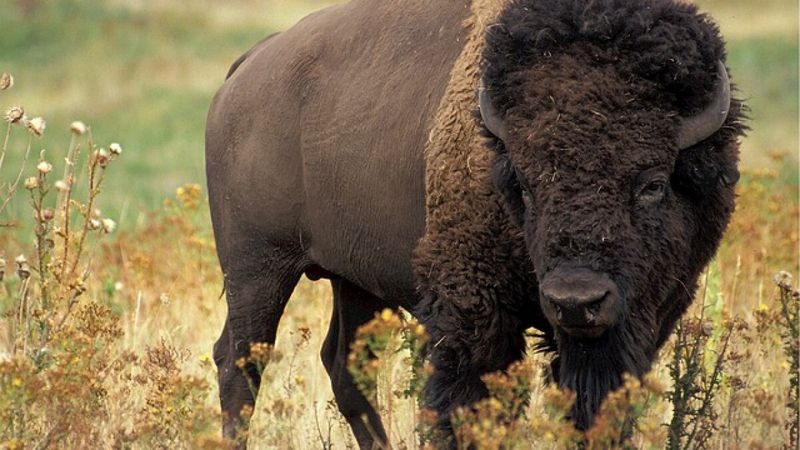
Utah’s Henry Mountains host America’s only truly free-roaming, genetically pure, and legally-designated wild bison herd. Unlike most conservation herds, these animals receive minimal human management, living much as their ancestors did centuries ago.
The herd descended from 18 animals brought from Yellowstone in the 1940s and now numbers around 300. They navigate the mountains’ diverse terrain, from desert floors to alpine meadows, following seasonal patterns dictated by weather and food availability.
Wildlife photographers seek rare glimpses of these elusive animals, considered the wildest bison left in America. Their remote habitat has protected them from many of the conflicts that challenge other conservation herds, making them living representatives of truly wild bison.

